Photo
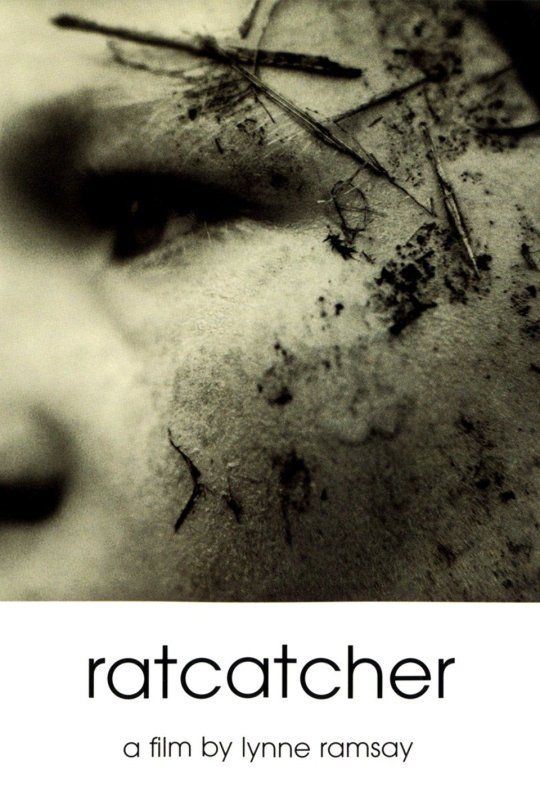
Liked this movie very much. Excited to to return to it at some point in the near future for a second viewing. In the mean time I’ll do a short write up soon.
0 notes
Photo
As does this! These drafthouse people are on top of it.

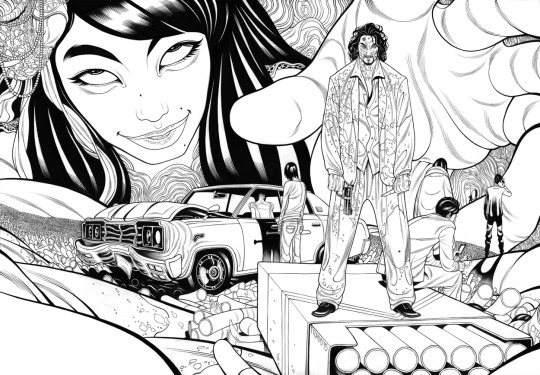
THE WORLD OF KANAKO
A film by Tetsuya Nakashima
Illustration by Tradd Moore with colors by Felipe Sobreiro
US Distribution by DRAFTHOUSE FILMS
The World of Kanako, released originally in Japan in 2014, will be opening in select US theaters and available on demand (iTunes, VHX, Vimeo) on Friday, December 4th, 2015.
Watch the trailer HERE, and look for showtimes HERE.
This promo poster will be included in Drafthouse Film’s Blu-Ray/DVD release of the film, release date TBA.
349 notes
·
View notes
Video
vimeo
This movie looks amazing.
1 note
·
View note
Text
Can’t wait to show you guys my xmas gift from mom. :D
1 note
·
View note
Text
Tokyo Story
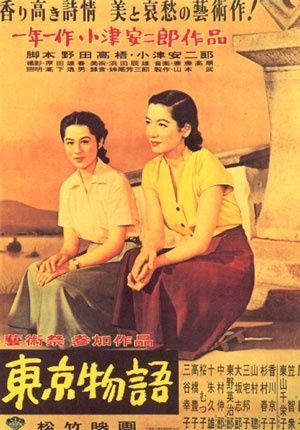
Tokyo Story (1953)
In honor of the death of Setsuko Hara, aged 95, I rewatched Tokyo Story today. This has become one of my most beloved films. Directed by the truly incredible Yasujiro Ozu, Tokyo Story is the plain and simple story of an old couple visiting their children in Tokyo.
Like nearly all of Ozu’s films, Tokyo Story is slow and mundane. If you are not a fan of melodrama, you are certainly a fan of Ozu. Ozu’s films are mundane with a purpose. He felt that the characters he creates are enough to attract and keep the attention of the viewer. Ozu claimed that writing a character without an actor in mind was like planning a painting with no colors in mind. Knowing this, let’s take a closer look at Setsuko Hara’s character in the film, Noriko.
Noriko is the widow of Shoji Hirayama, the second son of Shukichi (Chishu Ryu) and Tomi (Chieko Higashiyama). Noriko is depicted as a happy and respectful individual. She stands out in prominent contrast to the blood-children on Shukichi and Tomi, because she makes time for and respects the visit of her in-laws. She treats them and refers to them as if they were her own flesh and blood, as if they had raised her. They are her mother and father as far as she is concerned. While Koichi (So Yamamura), their eldest son, a doctor, is taking house calls on his day off. Noriko is taking time off of work to entertain her in-laws. While Shige (Haruko Sugimura), their eldest daughter is entertaining her fellow beauticians, going as far as too offer them a place to sleep when they get too drunk. Noriko is housing their mother, Tomi, offering her food, and letting her sleep in her dead son’s bed. Tomi notes this as quite a treat.
By the end of the grandparent’s visit, the viewer loves Noriko for her hospitality and effort. But we do not know her. We do not know her character or her life at all. We do not get a glimpse into her life until the very end of the movie, and in two separate conversations. The first being with Kyoko (Kyoko Nagawa), the couple’s youngest child, and the second being with Shukichi the patriarch himself. This is where Setsuko’s talent shines.
Kyoko begins their conversation complaining of the selfishness of her older siblings. Noriko once again comes off smelling of roses, when she explains they they have their own lives, and that children inevitably drift from their parents. Kyoko does not accept this is a viable excuse and pushes Noriko for answers. The subtlety in Sestsuko’s performance is a marvel. You can see in her face that she is upset. Not at her step-siblings, not at Kyoko, but at the state of human life. She continues to defend her step-siblings but does so in a way that blames life itself for this misfortune. Kyoko, very upset, asks Noriko if life is a disappoint, and without a flinch Noriko answers “yes”. It is the most beautiful moment in the film, and one of my favorite moments in any film.
Shukichi begins their conversation with a plea to Noriko to remarry. He explains that Tomi thinks of her as “the nicest girl she has ever known” and that it pains him to think of Noriko spending her life alone. Noriko refuses the compliment outright. She claims she is “selfish”, with tears in her eyes the admits that she “goes days without thinking of Shoji”. Shukichi claims that he would love for her to forget Shoji. Noriko knows she never will. The viewer is left hoping she’ll find another lover, but expecting the opposite.
Ozu is one of those directors that reminds you of the persistence of the human condition. A man born 1903 in pre-war Japan can touch on some of the deepest, darkest, and most forbidden facts about the human condition and his art can resonate with great power, still, to a young man born 98 years later in post-internet America.
Jackson Borghi
https://en.wikipedia.org/wiki/Tokyo_Story
https://thepiratebay.vg/torrent/8776540/Tokyo_Story_1953_720p_BRRip_x264_MP4_AAC-CC
(also on Hulu)
3 notes
·
View notes
Text
Pierre Etaix is Hilarious


I had the pleasure of watching a series of short films directed by and starring Pierre Etaix the other night. They are collected under the title As Long as You've Got Your Health, the title of the third (if I recall correctly) and I believe longest film in the collection. I’m not sure if I can aptly describe just what makes his movies so comically genius, but I’ll throw out a few ideas:
In short, Etaix makes people and objects interact in startling ways. He shows-- really shows-- how the everyday physical objects that inhabit our world affect people’s psyches. To use an auditory simile, it’s as if Etaix heightens the gain on these interactions in order to draw our attention to their significance. And as a result, something like a feedback loop is sometimes created. Such is certainly the case in As Long as You've Got Your Health. For instance, the film starts with loud jack-hammering and construction. But we swiftly realize there’s something preternatural about this construction. Even after the lense has panned away from it, it permeates the entire world with effects more forceful and far-reaching than they have any right to be. In far off neighborhoods glasses jump off of shelves, shelves jump off cabinets, crowds of people rush about, stampeding or absorbing anyone who stumbles across their path. It feels as if the world is coming apart at the seams, because it is. At one point a man standing on a hill (played by Etaix) attempts to talk on a phone. The lense zooms out and the hill upon which he stands is a large clump of earth being lifted into the air by a Backo. Later Etaix is stampeded all the way down the street and into a seat at a cafe, where he’s swiftly brought a cup of coffee. He attempts to take medicine the doctor has prescribed for nerves, but due to several brilliantly orchestrated accidents his unlucky neighbor ends up ingesting almost the entire bottle, and precedes to lurch out into the street wearing the blotchy visage of a man close to death. The doctor attempts repeatedly to listen to patients with his stethoscope but of course cannot hear a thing over the constant jackhammering that permeates the film. So he tells them they’re perfectly healthy and prescribes them medicine to help them relax. Oh, if only they could relax.
-Tucker Whitney
9 notes
·
View notes
Text
Karel Kachyna’s Kocár do Vídne
I came across Karel Kachyna’s name while reading about Czech directors, and so, spur of the moment I decided to watch Kocár do Vídne, which I found on youtube. I’ve tried to post the link but i am tumblr-illiterate, so here it is in plaintext:
https://youtu.be/mFGO6NpR5WI
Kocár do Vídne (Carriage to Vienna) is about a young Austrian soldier who has forced a Russian woman and her horses to help him carry his wounded comrade to the safety. They are travelling to Vienna in advance of the Russian army as WWII draws to a final close.
What grabbed me about this film from the first moment is the gorgeous, brooding forest through which the characters traverse. There is something almost arthurian about the mist-wreathed trees that, despite the more contemporary setting hints at a symbolic interpretation of the film’s events.
This film is stark, in terms of both the cinematography and the script. Surficially, the plot can be summed up in maybe 10 points without missing much. Here’s the first few: They’re in the cart and and the old soldier groans in the back, wounded. The woman won’t speak to either of them. She takes opportunities to rid the soldiers of essential survival items (compass, pistol) whenever their guards are down. The young soldier suspects nothing. et cetera.
However, this pared down plot leaves room for so much detail. Most of the narrative is told through body language, between the Russian woman and the younger Austrian soldier. This film conjures emotions similar to those evoked by Von Trier in Europa. Time and again the young Austrian soldier displays signs of true moral decency that confound the Russian woman so determined to hate him. It is truly fascinating to watch the moral confusion that results when circumstances press these two individuals towards violence. The young soldier’s innocence is perhaps the most captivating element of the film. He is obsessed with dates, and though Hitler has been dead only a short time, WWII is entirely in the past for this young man. At one point he jubilantly shouts “Hitler is dead!” Throughout the film, I was struck repeatedly by the thought that anyone of us could be like this young Austrian soldier, a genuine good youth who happened to be drafted into an army that perpetrated horrible evil, and condemned by the world because of it. The young Russian woman mirrors the audience in some aspects -- she is Kachyna admonishing us not to judge this youth solely by the crimes of the Third Reich. Without giving too much away, let me say that the film closes with a stroke of brilliant, devastatingly ironic metaphor.
One note on the youtube video: The subtitles are pretty decent, but those on a definitive DVD edition (I’m looking at you, Criterion. Get on it! (lol)) would surely surpass them.
-Tucker Whitney
4 notes
·
View notes
Text
Das Weisse Band
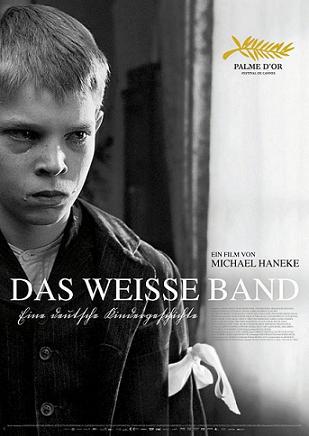
The White Ribbon is a 2009 black and white film directed by the Austrian filmmaker Michael Haneke. I’ve seen several of Haneke’s films at this point, but this stood out as my favorite.
The story is told from the perspective of a young school teacher. He narrates the story as if he was telling the tale to his children, or perhaps his students in the far off future. It takes place is Germany shortly before the first World War. The school teacher’s tale sets off with a doctor riding home from work when a thin wire tied across the roads trips his horse throwing him off and breaking his collar bone. We then hear of the lives of individuals in this town and how this event, and other malicious attacks affect them.
Shortly after the injury of the doctor, the children of a pastor skip out on their dinner to visit the village mid-wife who has been acting as a mother to the doctor’s children since the death of his wife. They inquire the mid-wife about what had happened to the doctor and express their sympathies. Upon showing up late to dinner their austere father, the town pastor, gives them a scolding and sends them to bed without dinner. This scene mirrors another in Ingmar Bergman’s Fanny and Alexander. The lecture given to the children recalls a similar scolding given to Alexander by his step-father, another cold and unforgiving man of God. In both cases the father figure claims that he must punish the children out of a mutual respect, and even prescribes the same ‘10 lashings of a cane’ upon them. After their scolding and punishment the pastor ties a white ribbon around the eldest son and daughter’s arms to remind them of the importance of innocence.
I have a hard time with Haneke’s films. I always feel as if I am missing a lot. This was still very much true in my viewing of Das Weisse Band. It might serve to be watched multiple times. But even without catching all the subtleties of this film I was very impressed. The characters developed in the film are interesting and realistic. The story was enthralling, albeit difficult to watch. You find yourself interested in every character introduced. I want to look deeper into this film and Haneke’s in general, but I highly suggest watching this film so we can look deeper together.
Jackson Borghi
https://en.wikipedia.org/wiki/The_White_Ribbon
https://thepiratebay.la/torrent/7911868/The.White.Ribbon.2009.720p.BluRay.x264.anoXmous
2 notes
·
View notes
Text
I’m drunk rn, but I’mma write a short thing on Haneke’s Das Weisse Band tomorrow I swear. Maybe even another bit on Ozu’s An Autumn Afternoon.
2 notes
·
View notes
Video
youtube
This may be the best thing ever caught on camera.
23 notes
·
View notes
Text
Cries and Whispers
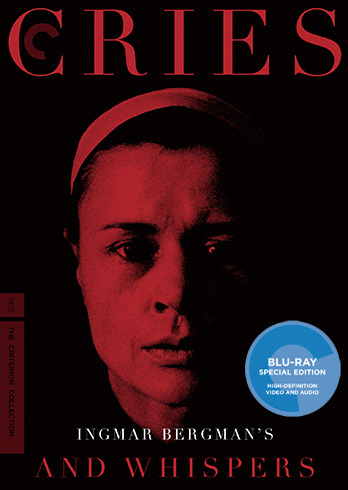
Ingmar Bergman - 1972
Cries and Whispers is the first color film of Begman’s that I have watched. Once again collaborating with Bergman, Sven Nykvist shows mastery of color within the first few scenes. It was really exciting to see Bergman’s work in full color, and he does not shy away from it’s use in the least.
Most of the story takes place within a bourgeois manor where two sisters, Karen (Ingrid Thulin) and Maria (Liv Ullmann) along with their servant Anna (Kari Sylwan) are looking after their dying sibling Agnes (Harriett Andersson). What immediately stands out is the blood colored walls that decorate the mansion. It’s a thick, deep red that shows up time and again throughout the film. Bergman goes as far as to fade out to this color, or filter long close-up shots of the characters faces in it (as seen above).
What becomes very apparent is the nightmarish atmosphere of the film. You are frequently unsure of the timeline and often unsure if the scene you are watching happened at all. This film is experimental through and through. Without giving too much of the plot away, I’ll say that it resides somewhere between life and death.
Unlike many of Bergman’s earlier works Cries and Whispers is far from calm and contemplative. Bergman’s revered Seventh Seal climaxes with Antonius Block pleading with death for answers to his questions. While this stands out in sharp contrast to the tone of the film, feeling much more violent and desperate, it would get along nicely with Cries and Whispers. Where Seventh Seal feels like a letter written to the audience, or to a silent god, Cries and Whispers is a scream. A constant wail to and against nothing.
-Jackson Borghi
https://en.wikipedia.org/wiki/Cries_and_Whispers
https://thepiratebay.vg/torrent/5079184/Cries_and_Whispers_[Ingmar_Bergman]_[1972]_[Criterion]_[Dual_Aud
1 note
·
View note